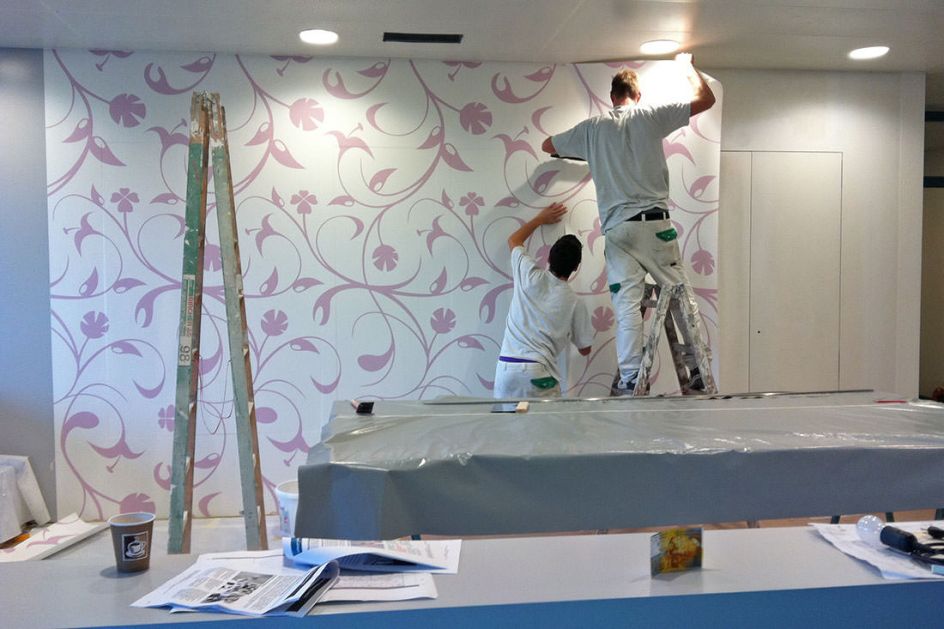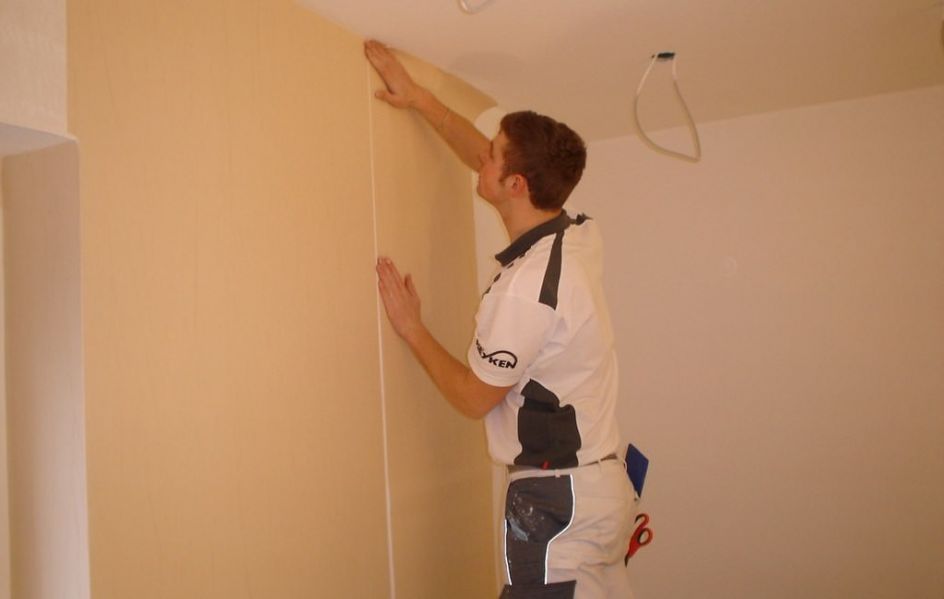For those who cannot - or do not want to - tackle the process of wallpapering themselves, there are always specialised companies and tradespeople. We are of course talking about painters and decorators, because they ought to know the process inside and out. But should the result not meet with expectations - especially when it comes to high-quality, unusual patterned wallpapers - disappointment can lead to heated debates.
This can be avoided by clever planning, and the client should never completely relinquish all responsibility for craftsmen’s services. Clients contribute significantly to the outcome, i.e. whether the results match their expectations and the wallpaper was applied correctly. You can do justice to this responsibility if you stick to some basic rules, our checklist, and the additional information we have prepared for you below.

Basis rules you should always adhere to when hiring craftsmen:
- Your personal presence is a must.
- You should continuously evaluate and monitor each step.
- Address problems or anything out of the ordinary directly: communication eliminates misunderstandings, prevents mistakes and limits potential damage.
Let’s take a closer look at the basic rules. It is not uncommon that wallpapering projects done by a professional company will be planned to coincide with clients’ holidays. The client takes some time out, doesn’t have to deal with the dirt and noise, and is looking forward to freshly wallpapered rooms upon his or her return. It’s fairly obvious that this could lead to problems. If you’re not present, you cannot monitor what is happening - which is important if you are hoping for the right results.
That’s why:
You should be present and flexible in your approach. If possible, take off the days when the wallpapering is being done so that you can be there. You don’t have to constantly supervise your painters and decorators, as this would be counter-productive for both parties. However, if you do spot-checks, continuously evaluate progress, and communicate with regards to individual steps, you will achieve the desired outcome. This doesn’t mean that you don’t trust your craftspeople, but they’re only human after all, and despite all their experience and professionalism, they might make mistakes. It is always best to settle questions directly, not via phone, text, or third persons.
What to determine before awarding a contract - how to find the right painter/decorator
You have purchased your dream wallpaper and are ready to have it put up on your walls. Let’s assume that you’d like to have a painting/decorating company conduct all necessary steps, including stripping the old wallpaper, preparing the surface, and hanging the new wallpaper. When choosing a company, it is important to ask the relevant questions in order to be able to make a decision based on facts. Remember: You want excellent work as you are investing in top-quality wallpaper, so you expect it to be handled appropriately. And you can only expect that from a competent specialised company for painting and decorating, not from a general “all-rounder”. Rely on a company with a master craftsman's diploma under its belt, and remember: Exceptional work has its price and you cannot scrimp if you want the job done properly.

Let’s now look at the checklist you should go through in order to find an experienced painter/decorator company:
- Before you get a quote from any company, you should organise a viewing, as this is the only way for them to plan the individual steps and to base their quote on actual facts.
- You should be prepared and have some background knowledge before you conduct the viewing with the master craftsman or one of their employees. Check out our website where you will find a variety of useful information around wallpapers and wallpapering in our wallpaper instructions and the relevant blog articles. The better you are prepared, the more you are able (to say it bluntly): “to separate the wheat from the chaff” - and nobody will be able to pull the wool over your eyes. Unfortunately, ignorance is sometimes exploited. So to reiterate: Do not relinquish your responsibility!
- Be sure to find out whether and to what extent the company is versed in dealing with and eradicating mould, as these problems often only surface when the old wallpaper is being removed. If it turns out that your chosen painter/decorator company isn’t capable of handling the issue, it is already too late, and progress might be delayed.
- Present the new wallpaper during the viewing and gauge the company’s knowledge regarding the material and the correct process. Different types of materials and surface structures (e.g. natural wallpapers, metallic wallpapers, beaded wallpapers, flock wallpapers, foil effect wallpapers) require the correct process, e.g. some particularly delicate wallpapers should only be handled whilst wearing gloves in order to prevent staining or pressure marks. Choosing the right paste or adhesive is also a decisive factor. For patterned wallpaper, edges, rapport and alignments have to be taken into consideration. Drying too quickly can lead to problems, just as drying too slowly can, and an experienced painter/decorator should know all there is to know about the correct room climate to achieve the best results. Don’t hesitate to ask about previous experience with your specific type of wallpaper, for instance training courses, additional training, perhaps photographic evidence of previous projects

During the wallpapering process: These are your tasks to ensure everything runs smoothly!
You want to achieve perfect results not only for your eyes but also for your wallet, and you want to enjoy your wallpaper long-term. Once you have found the right painter/decorator for you, just follow our Tips when the work proceeds.
- Make sure you examine the “naked” wall once the old wallpaper has been stripped, and take some pictures. This way, you can verify later on if (mould) damages were overlooked and/or not dealt with appropriately, which is of the utmost importance for you as the client. Ask for a detailed description of the surface preparation: Is the surface stable and sound, does it have to be pre-treated, to what extent does the surface have to be mended or prepped with anti-mould products? Is lining paper required? Which materials are used to prepare the surface?
- Once the surface has been prepared, you should examine the result. Are you happy with it? If so, you should discuss the next steps with your appointed tradesperson. Now is the time for them to explain to you how they will hang the specific wallpaper, which paste they will use, and which wall they will begin with. Make sure you clearly point out the wallpaper symbols and processing instructions provided by the manufacturer with the wallpaper roll. Don’t let the fact that you might feel like you’re lecturing the tradesperson put you off. Remember: Your aim is to achieve the best possible outcome! Observe the room temperature - it shouldn't be too hot or too cold and there mustn’t be any draught.
- You should agree in advance, i.e. before the work begins, that only one wall will be done to start with. Once the wallpaper has dried properly and the result meets with your expectations, the process can continue. This way, any mistakes will be visible and obvious, and you don’t risk potential issues being repeated on any additional wall. Of course this also has an impact on costs.
- Ask the tradesperson to let you know once they have hung a few strips of wallpaper so that you can inspect the first section. This means that any serious mistakes can be eliminated right from the get-go.
- Then continue to do random checks, and - after each wall - make sure that things are still proceeding smoothly. And don’t forget the final inspection (after the wallpaper is completely dry) to ensure the desired result has been achieved.

